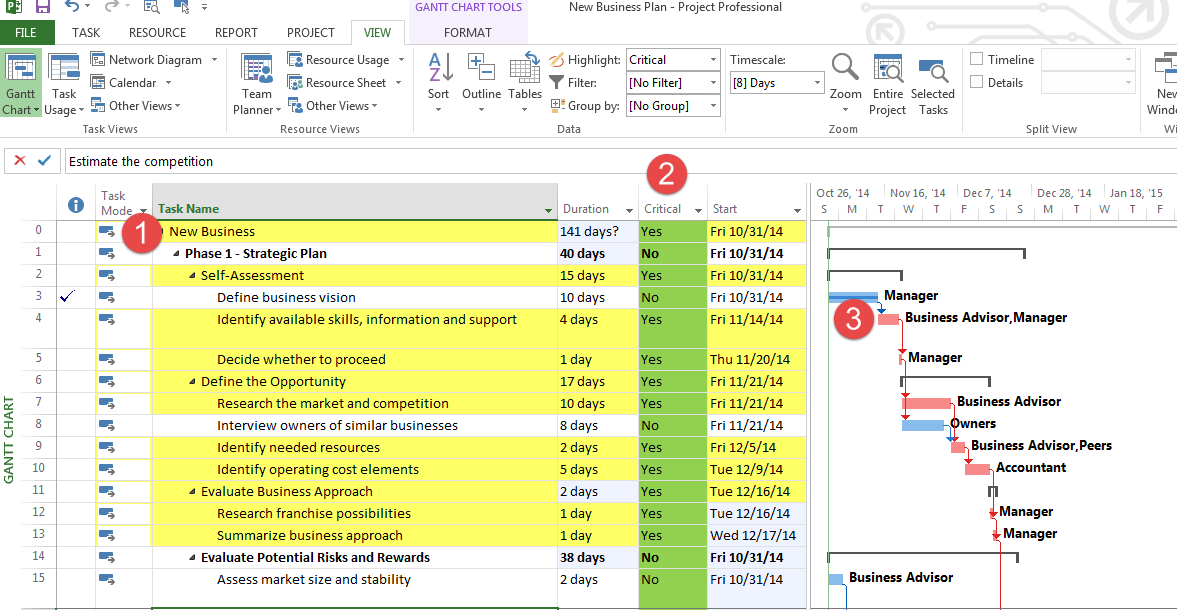As experienced Project Managers, we know that a critical path on a project schedule is the longest necessary path of a series of interdependent activities or tasks required for the project to be completed on time or as we refer to it, on schedule. Any task falling along this path has zero float or slack, which means they have no opportunity whatsoever to run late as this will end up delaying the entire project.
You may also know or have heard that there are a couple of techniques such as the Program Evaluation and Review Technique commonly known as PERT or the Critical Path Method (CPM) which, through a mathematical analysis (usually a ‘forward pass’, ‘backward pass’ and ‘float calculation’), allow us to clearly and visually identify this path after having logically portrayed the entire set of project activities in a network diagram by respecting all task inter-dependencies, constraints and specific durations.
But in practice, however, we don’t really go through the work of using these manual techniques to determine the critical path as we manage our projects. We do, on the contrary, apply them constantly through the scheduling engines we use on a daily basis as it is the one driver which help us determine our project finish date.
In Microsoft Project for instance, the critical path gets calculated on a constant basis by performing ‘forward pass’ and ‘backward pass’ analysis throughout the entirety of scheduled tasks, taking into consideration all dependencies, constraints, calendars and other factors. Therefore, it is essential to always keep in mind that because the critical path gets constantly calculated, it is never fixed and the one you see today may not be the exact same one you see tomorrow – especially if some of the following actions have taken place:
- Tasks falling under the most recently reported critical path have completed
- Duration or work of a critical path task was shortened
- Constraints or dependencies on a critical path task changed
- Work of a critical path task got split into two to allow for different resources to work on it simultaneously
- Overtime on a critical path task got scheduled
- Additional resources were assigned to work on a critical path effort-driven task, shortening the task’s duration
The image below shows different ways in which we can easily keep track of the critical path on our project in Microsoft Project. These are: 1) highlighting the critical tasks; 2) adding a “critical path” column indicating which tasks are critical with a yes/no; and 3) displaying in red the critical path on the Gantt chart.

In summary, if we have a mandated completion date on our project or simply want to do a good job as project managers by hitting our initial agreed upon delivery date we need to make sure to do the following. We must understand the basics lying behind the critical path calculation and second that we pay close attention to and fully understand the fundamentals of managing and closely track the tasks and respective resources falling under our project’s current critical path.
Interested in learning even more about how EPMA can help you with your PPM skills? Sign up for one of our PPM training classes.
Thanks for reading! Please feel free to leave comments below or check out our other blogs on Microsoft Project, Project Server, SharePoint and Project Management Methodology.
Follow us at @EPMAinc, linkedin, or facebook

